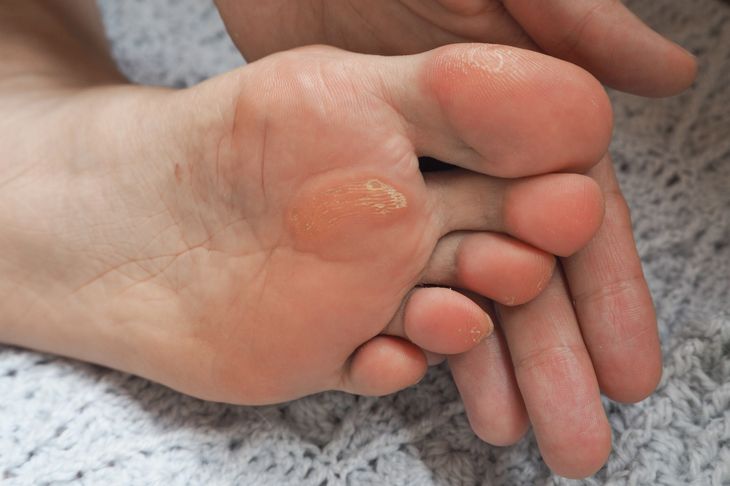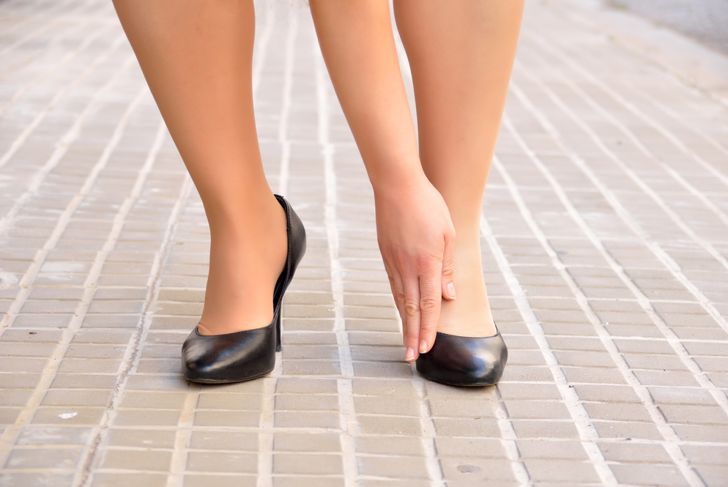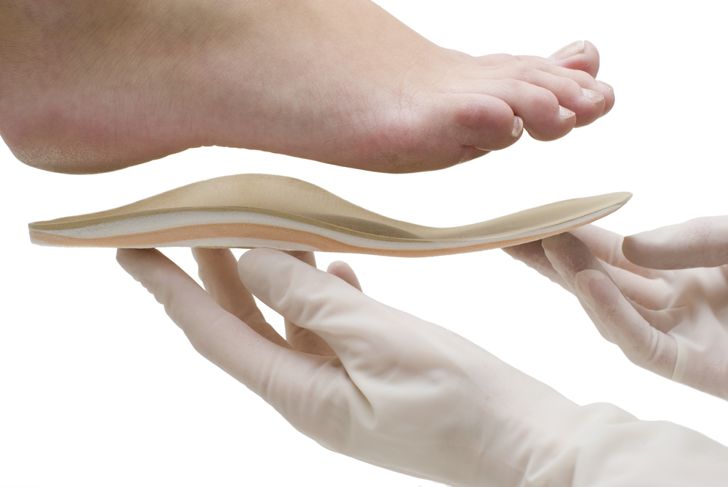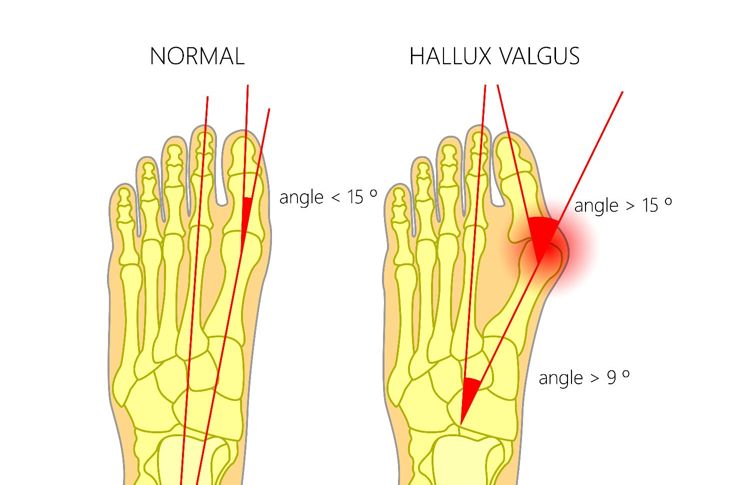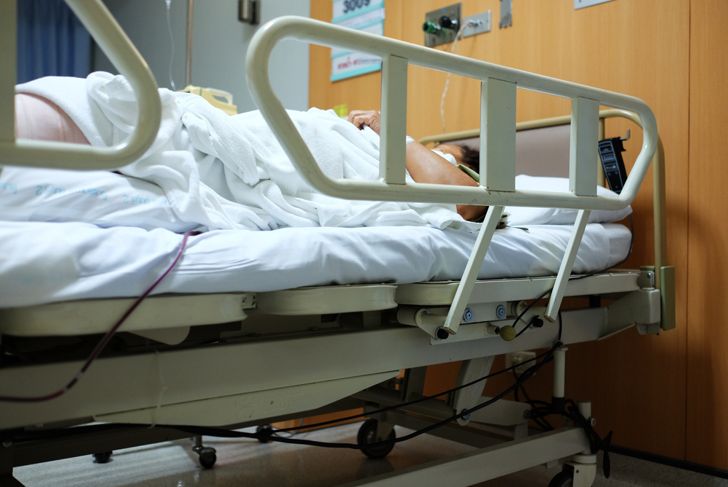Hallux valgus is a medical term for bunions. They develop on the joint at the base of the big toe. Several things can contribute to a bunion including tight, narrow shoes or high heels. Foot injuries or arthritis may also make the condition worse. However, there is no exact cause for hallux valgus; it may be an inherited condition or present at birth as a congenital deformity. Women tend to develop bunions more than men and adolescents can also get the foot condition as early as 10-15 years old. There are specific symptoms and signs to look for when it comes to bunions. The progressive bone disorder can become painful in which case you will have to seek treatment. There are both surgical and non-surgical options depending on your condition. Keep reading to learn more about symptoms and treatments of hallux valgus.
Symptom: A Bony Lump on Your Big Toe
The primary symptom of hallux valgus is a bump at the base of your big toe. Bunions start out small but can get worse over time. As the big toe pushes against the neighboring one, the alignment is uneven. Therefore, your joint protrudes, and a bulging lump develops on your big toe. In some cases, hallux valgus can form on the pinky toe. Since the bumps are significantly smaller on the little toe, the condition is known as bunionette or tailor’s bunion.
Symptom: Inflammation
Besides a large bump at the base of your big toe, you may experience swelling, redness, or soreness around that particular joint. In some cases, a burning sensation has been noted as well as numbness. You may not notice any inflammation at first, but over time it may develop.
Symptom: Corns or Calluses
Your skin may also thicken at the base of the bunion. The thickening of skin is known as a corn or callus. Besides the initial lump by the joint of the big toe, a bunion can also create corns or calluses on the feet. They often develop where the first and second toe overlap.
Symptom: Pain or Restricted Movement
You may experience pain with a bunion. It can else be intermittent, which comes and goes, or persistent. If you have any pain in your big toe or foot because of a bunion, you should contact your doctor immediately. The unaligned joint can also restrict the movement of your big toe depending on your condition. For example, if arthritis affects your toe, you might have decreased movement. You need to seek medical care right away. It is important to note that your symptoms of hallux valgus can worsen if you wear narrow shoes or high heels. Standing on your feet for long periods of time can also make the condition worse.
Treatment: Non-Surgical Options
There are multiple ways to treat a bunion without having surgery. Discuss your options with a doctor or foot specialist to determine which treatments are right for you. Wearing the proper fitting footwear will relieve pressure on your big toe. Shoe inserts known as orthotics can also help as well as padding, splinting, or tapping your big toe. You can reduce inflammation by applying ice to the red and sore spot. Over-the-counter pain medication such as ibuprofen, acetaminophen, or naproxen sodium can lessen swelling and pain along with cortisone injections.
Treatment: Repair Tendons and Ligaments
If you still experience pain from hallux valgus after trying non-surgical treatments, your doctor may recommend an operation. There are numerous types of surgery available, and your medical provider may use more if the bunion causes constant pain that interferes with your daily routine. Repairing the tendons and ligaments of your toe involves shortening the weak joint tissue as well as lengthening the big toe.
Treatment: Osteotomy
Osteotomy is often completed while repairing the tendons and ligaments. Your surgeon will use plates, pins, or screws the fix the bone and realign the joint. After surgery, you must wear appropriate shoes to prevent recurrence. In most cases, you will no longer be able to wear narrow shoes. Although you might be able to walk after a bunion operation, it can take weeks to months for your foot to fully recover.
Treatment: Arthrodesis
Arthrodesis is a surgery that removes the swollen surface of the joint. Like osteotomy, the doctor will use plates, screws, or wires are inserted into the foot to hold the joint together as it heals. Arthrodesis is recommended only if you have severe hallux valgus or arthritis.
Treatment: Exostectomy
This procedure involves surgically removing the bump on the joint of your big toe. Osteotomy is usually performed as well. Even though this type of hallux valgus surgery takes off the bony lump, it does not correct the underlying problem that caused the bunion to begin with. One procedure is not necessarily better than the others. You need to talk to your medical provider about which is best for your condition.
Treatment: Resection Arthroplasty
This surgery is not usually recommended for hallux valgus. However, the procedure involves removing the damaged portion of the joint. In turn, you will have more space between the bones of your toes. Resection arthroplasty is ideal for older patients or people who did not have success with other types of bunion surgery. If you have severe arthritis and cannot complete the arthrodesis operation, this might be your next option.

 Home
Home Health
Health Diet & Nutrition
Diet & Nutrition Living Well
Living Well More
More

